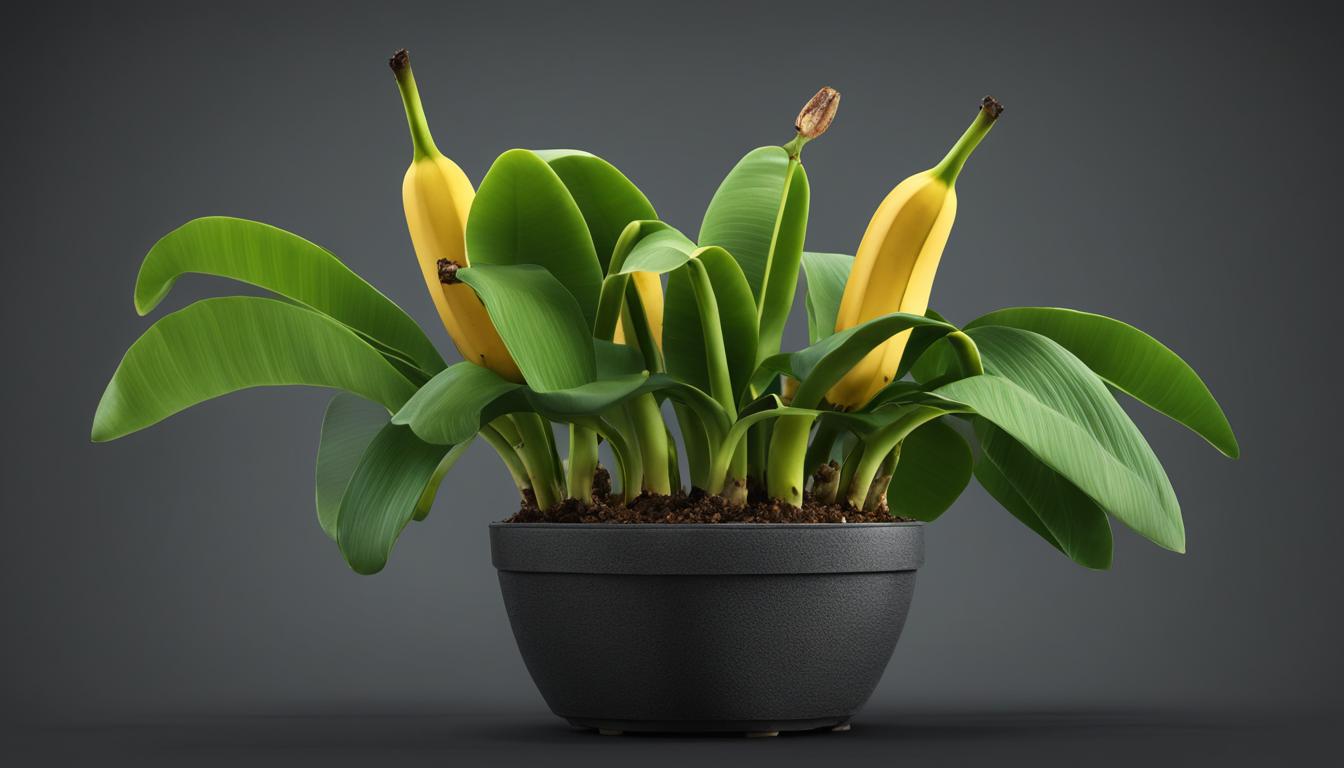Have you ever wondered how long it takes for a baby banana plant to bear fruit? Well, you’re not alone. Many gardeners and enthusiasts are curious about the timeline of a baby banana plant’s fruiting process. Understanding these growth stages can help you plan and care for your plants more effectively.
In this section, we’ll explore the average duration for baby banana plant fruiting time and discuss the factors that can influence it. We’ll also provide some nurturing tips to help accelerate the process. But first, let’s take a closer look at the timeline of a baby banana plant’s growth and development.
Growth Stages of a Baby Banana Plant
Table of Contents
A baby banana plant undergoes several growth stages before it can produce fruit, and each stage is critical to ensure the plant’s proper development. Understanding these stages will give you a better idea of how long it takes for a baby banana plant to reach maturity and start bearing fruit.
The first stage of growth is called the vegetative phase, where the plant focuses on developing its root system and leaves. During this stage, the plant requires sufficient water and nutrients to support its growth. With proper care, this stage typically lasts for six to eight months, depending on the banana variety and environmental conditions.
Did you know: baby banana plants are often propagated from shoots that emerge from the base of mature plants, as opposed to seeds.
The next stage is the emergence of the pseudostem and leaves. The pseudostem, which appears as a tightly-packed cluster of leaves, gradually grows taller and thicker, providing the necessary support for the developing fruits. During this stage, the plant requires ample sunlight, moderate temperatures, and sufficient water to grow properly. This stage usually lasts for another six months.
The final stage is the development of the banana bunch. As the pseudostem grows, it produces a flower that gradually develops into the familiar banana bunch. The fruit requires a lot of nutrients to develop correctly, and it can take another three to six months before the bananas are ready for harvest.
Overall, a baby banana plant takes between 12 to 18 months to produce fruit from the time of planting. However, various factors can influence the duration, including the banana variety, growing conditions, and proper care and maintenance.
Factors influencing fruiting time
There are several factors that can affect how long it takes for a baby banana plant to bear fruit. One of the most significant factors is the banana variety. Different varieties have varying fruiting times, which can range from nine months to over two years. Additionally, environmental conditions such as temperature, humidity, and sunlight can also play a role in fruiting time. Banana plants prefer warm, humid climates and need plenty of sunlight to thrive.
Proper care and nurturing can also have a significant impact on fruiting time. Regular watering is crucial to keep the plant hydrated, and a balance of nutrients, including potassium and nitrogen, is necessary for healthy growth. A lack of nutrients can result in stunted growth and delayed fruiting.
Insufficient nutrients can lead to a longer growing cycle, delaying the fruiting process.
By addressing these factors and ensuring your baby banana plant receives the necessary care and nutrients, you may be able to shorten the average time for a baby banana plant to bear fruit, which is typically 15-18 months. Keep in mind that bananas are sensitive to extreme weather conditions, pests, and diseases, so it’s essential to provide proper protection and care to ensure a healthy and fruitful yield.
Nurturing Tips for Faster Fruiting
Proper care and nurturing of your baby banana plant are crucial in facilitating faster fruiting. Here are some essential tips to keep in mind:
Adequate Sunlight
Ensure your baby banana plant receives sufficient sunlight to promote healthy growth and fruit development. Banana plants require at least six hours of direct sunlight daily to reach maturity and produce fruit. To ensure your plant gets enough sunlight, consider placing it in a spot with full to partial sunlight exposure.
Optimal Watering and Humidity Levels
Providing your baby banana plant with the right amount of water and humidity is essential. Banana plants thrive in consistently moist soil, so be sure to water them weekly or as needed to maintain the soil’s moisture levels. Additionally, banana plants require high humidity levels to grow correctly. Consider placing a humidifier near your plant or misting it regularly to maintain optimal humidity levels.
Appropriate Fertilization
Applying the right fertilizer is critical in nurturing your baby banana plant to bear fruit. Apply a balanced, slow-release fertilizer to your plant every two to three months during the growing season to provide it with the necessary nutrients that promote fruit development. Ensure not to apply too much fertilizer, as this can lead to salt buildup and damage your plant.
Protection from Pests and Diseases
Protecting your baby banana plant from pests, diseases, and extreme weather conditions is crucial in fast-tracking its fruit-bearing stage. Use a suitable pesticide to ward off pests such as aphids and spider mites and maintain proper hygiene by cleaning up any plant debris. Also, protect your plant from harsh weather conditions such as frost, high winds, and extreme heat, which can damage and delay growth.
By following these nurturing tips, you can help your baby banana plant grow healthily and produce fruit faster. Remember to be patient and enjoy the process as your plant grows and develops.

